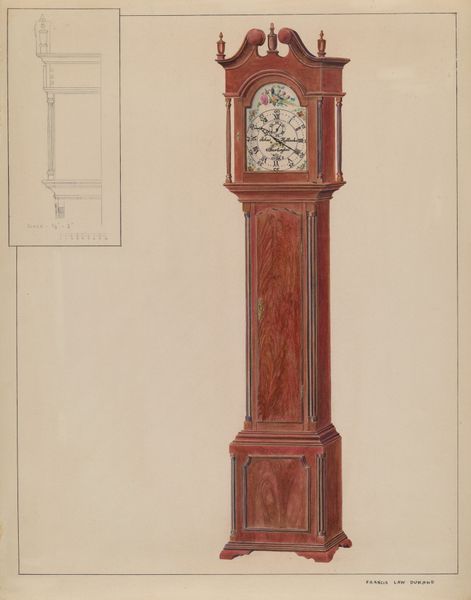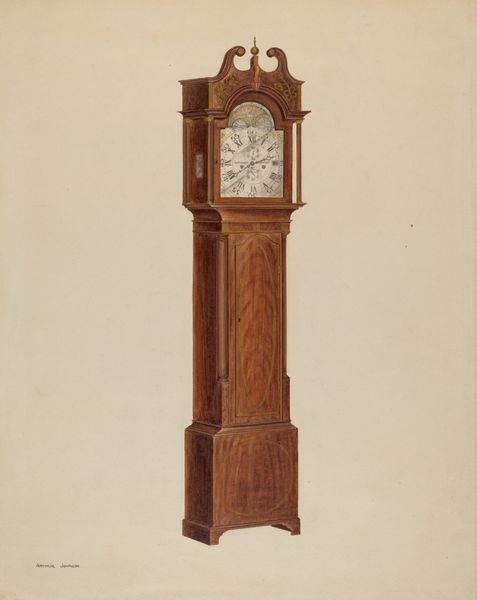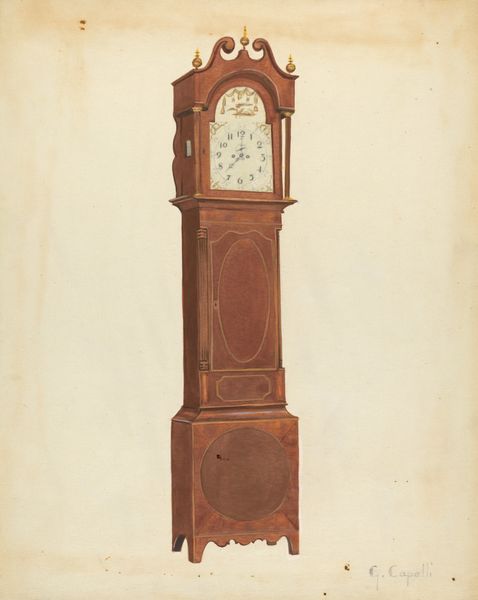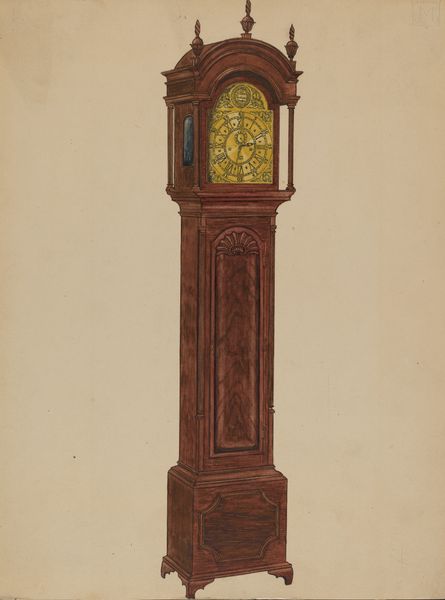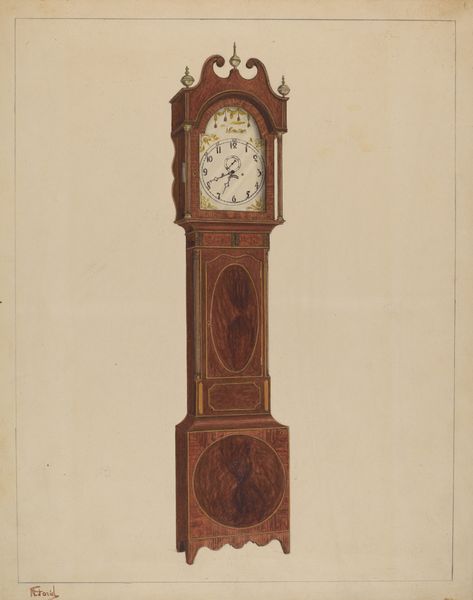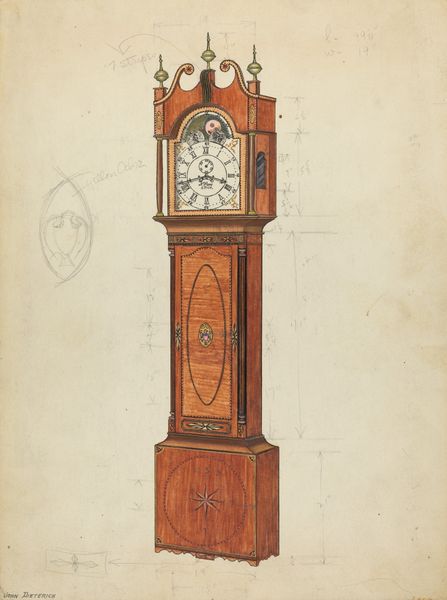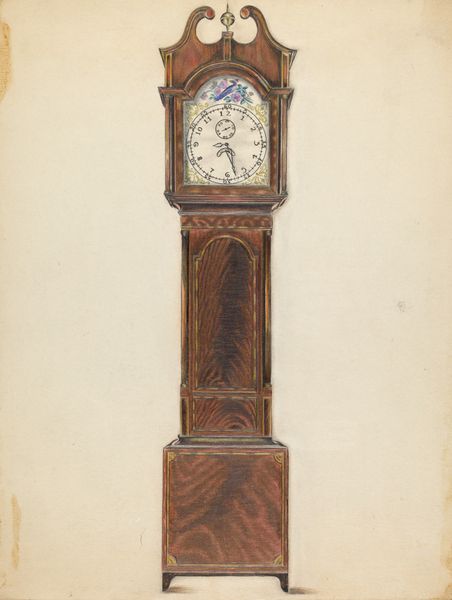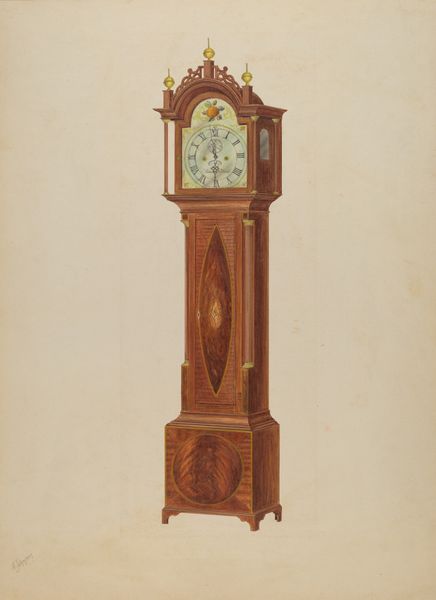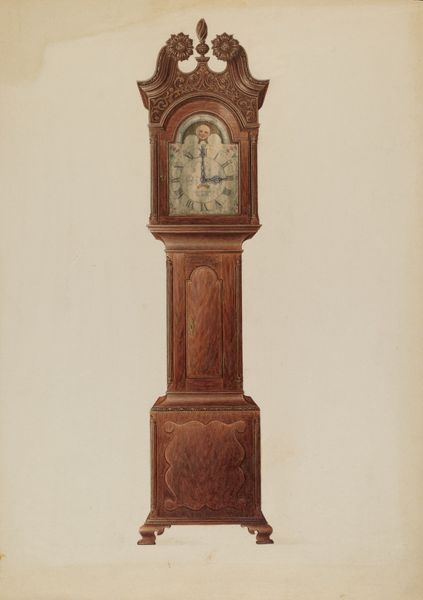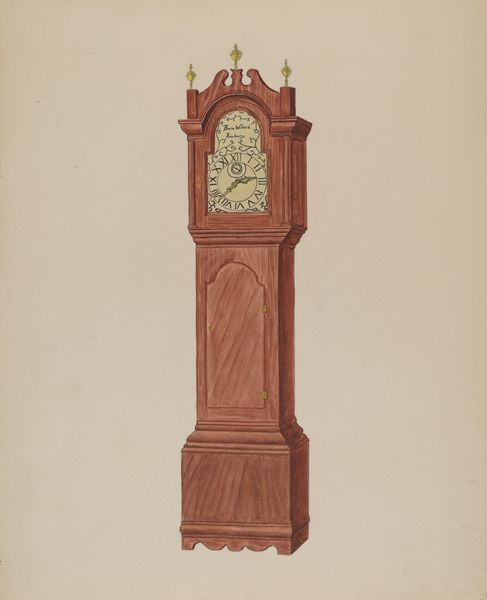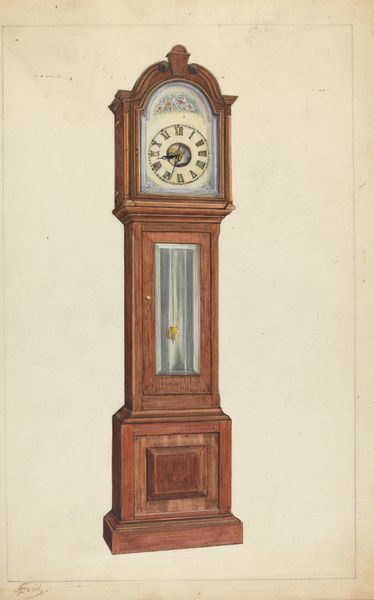
drawing, watercolor
#
drawing
#
watercolor
#
watercolour illustration
#
academic-art
#
decorative-art
Dimensions: overall: 29.7 x 22.6 cm (11 11/16 x 8 7/8 in.) Original IAD Object: none given
Copyright: National Gallery of Art: CC0 1.0
Curator: Here we have “Tall Clock,” a watercolor and drawing piece created by Elizabeth Curtis between 1935 and 1942. It’s quite striking, isn’t it? Editor: Indeed. My initial impression is that it exudes a kind of restrained elegance. The watercolor medium lends it a soft, almost dreamlike quality, despite the rigid geometry of the clock itself. Curator: Absolutely. Curtis’s background suggests a formal artistic training. But what’s particularly fascinating here is the deliberate presentation. It reminds us how much influence early- to mid-20th century aesthetics were influenced by industrial design principles. Editor: Tell me more, please, since what intrigues me most is the adjacent placement of what appears to be furniture inlay elements in the work. How should one read this visual construction? Curator: Well, that combination hints at both precision and the broader application of design. Curtis might be proposing a design concept—highlighting not only the entire clock but also its specific decorative features. In that sense, it’s also operating as a proto design blueprint that merges individual aesthetic vision and functional utility. Editor: A blueprint… a fascinating choice of words because even her color palette is restricted—predominantly browns and reds, punctuated by the pale face of the clock. This tight color arrangement, for me, contributes to a harmonious, cohesive impression, one in which the details, for instance the hardware in the top of the piece, stand out prominently in relief. Curator: You are perceptive; this subdued palette might be deliberate. The interwar period demanded a new kind of consumer consciousness. And I think in rendering such a classic household item with so much exactness Curtis perhaps captures both a sense of nostalgia with an attention to emergent detail-oriented design. Editor: So we're looking at something that captures cultural ideals. You know, if you subtract the representational value from the image entirely you are left with striking and varied uses of triangular form. It’s something I noticed right away, just how compositionally central a geometric element can be even in figurative work such as this. Curator: That is a wonderfully apt observation. The artwork's subtle power truly lies in that layering. It not only chronicles aesthetic and consumer transitions, it encapsulates a specific design logic of her time. Editor: A telling representation. I'm now walking away from this thinking about design’s subtle influence. Curator: Indeed, I leave contemplating how this piece encapsulates a crucial moment in decorative and functional art evolution in design!
Comments
No comments
Be the first to comment and join the conversation on the ultimate creative platform.


